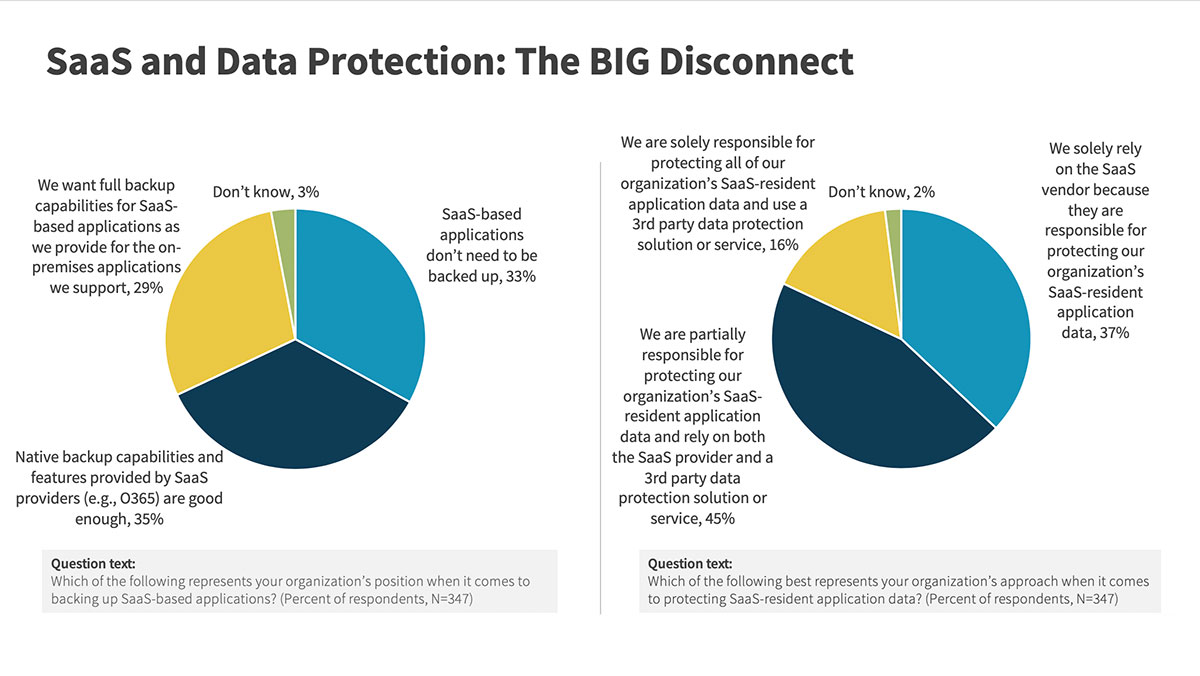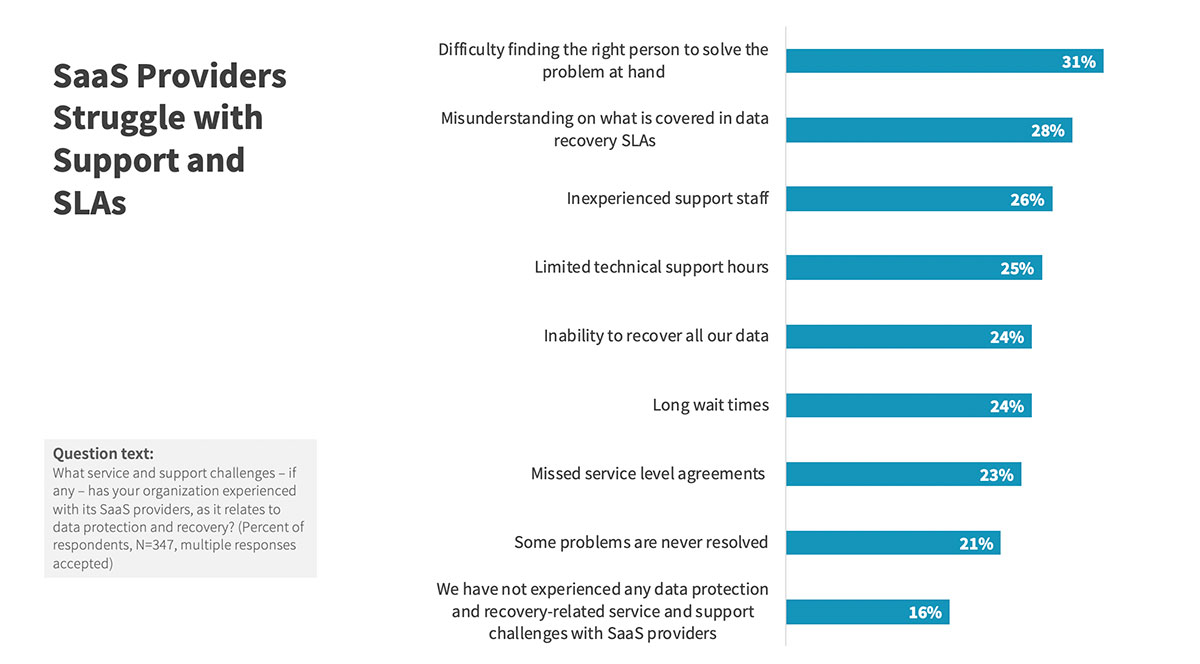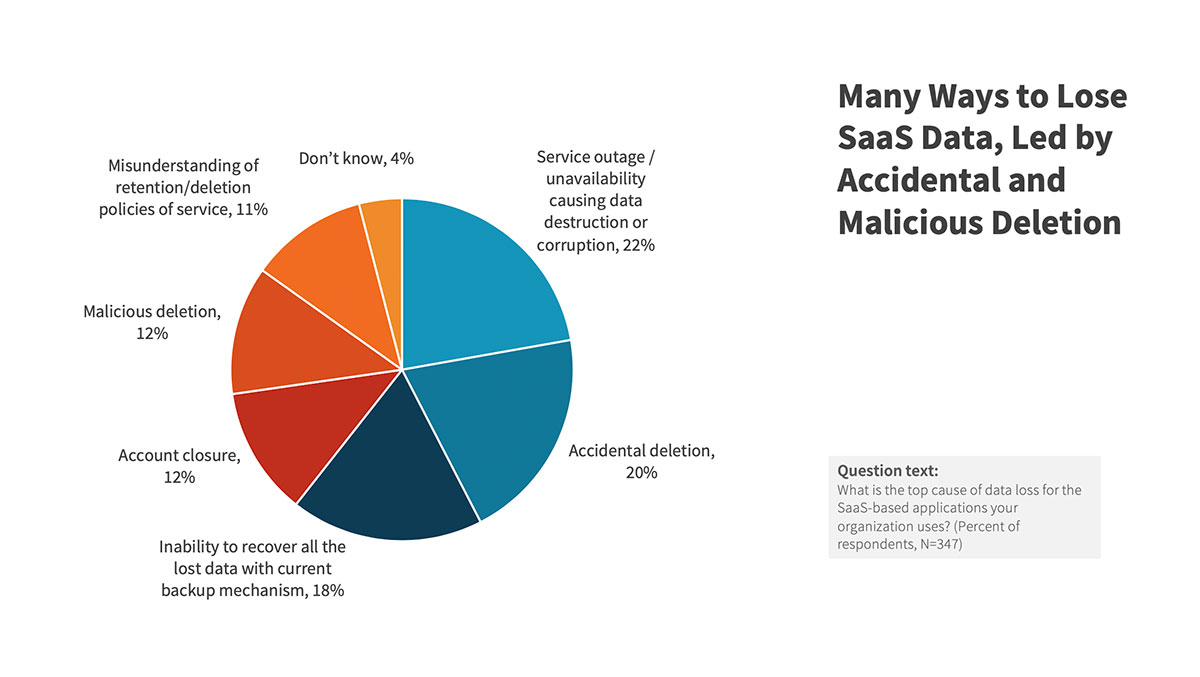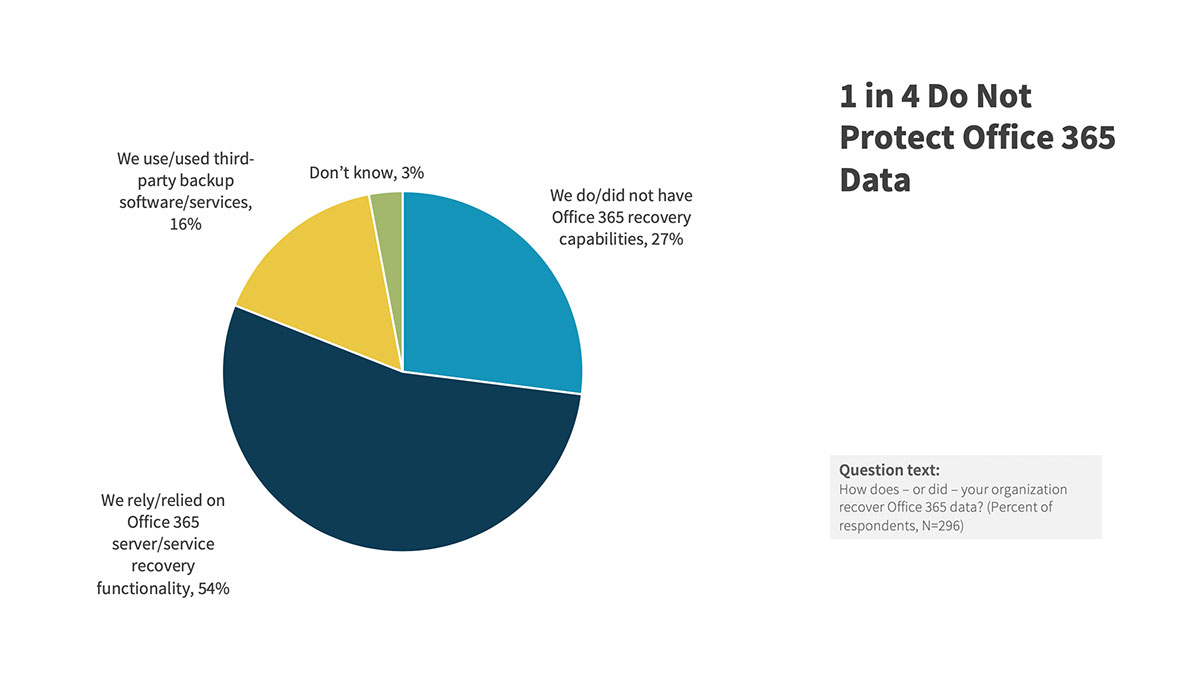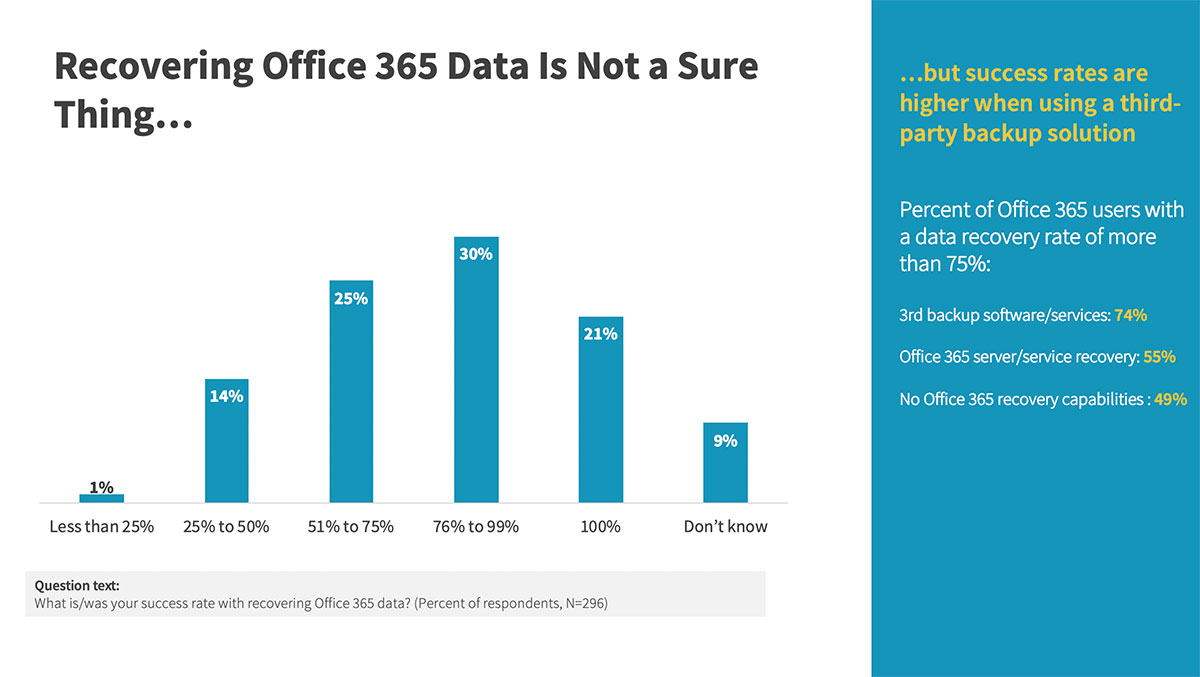To better understand how the shift to cloud applications is impacting organizations’ approach to data protection, Enterprise Strategy Group (ESG) recently surveyed 347 organizations about their approach to SaaS backup and recovery and depth of knowledge regarding the capabilities of their existing SaaS service providers. The survey results revealed a disconnect between what IT teams believe SaaS application providers support for data protection, and what kind of data protection SaaS application providers actually support as part of their service offerings.
Misconception that SaaS data is automatically backed up and protected
The survey measured a misconception amongst some IT teams that data resident on cloud applications are inherently protected. In fact, 68% of ESG survey respondents felt that SaaS applications didn’t need to be backed up (33%) or that SaaS providers already include “good enough” capabilities (35%).

